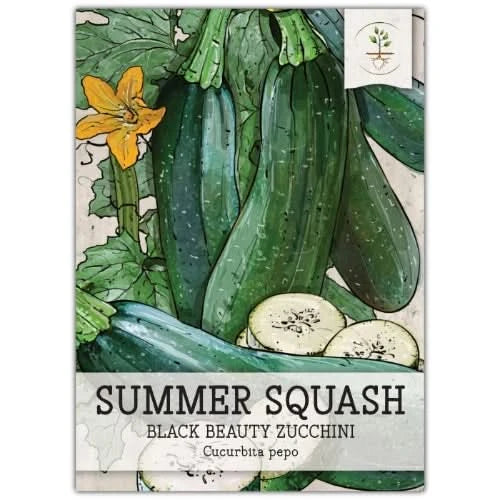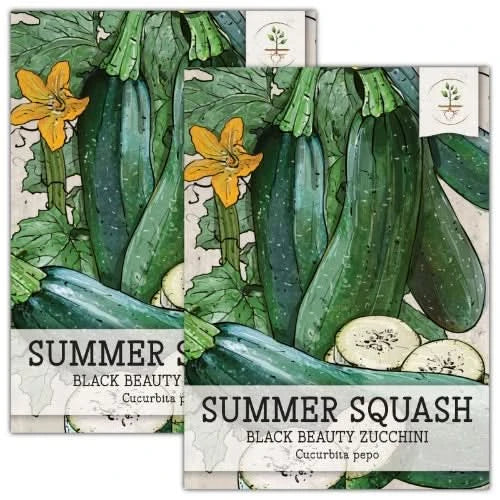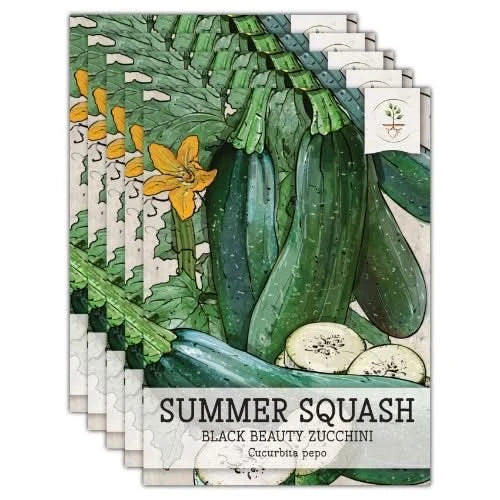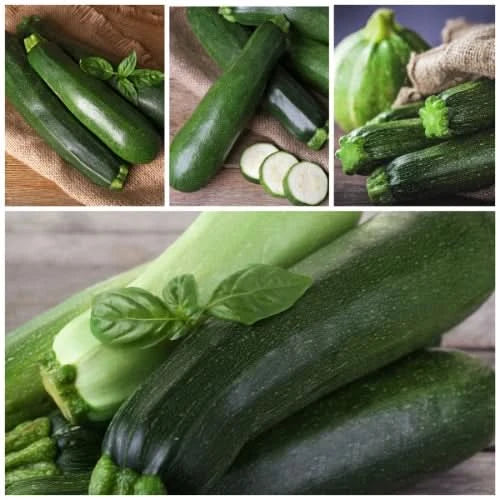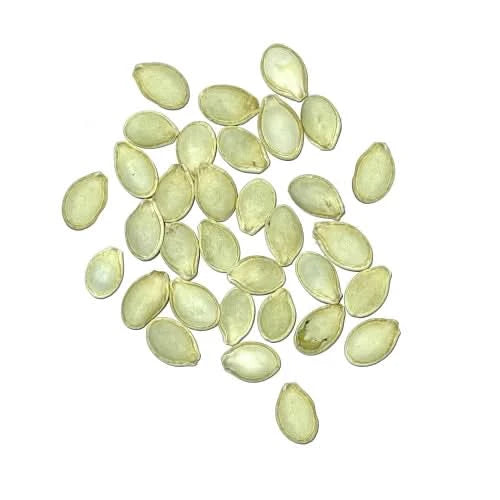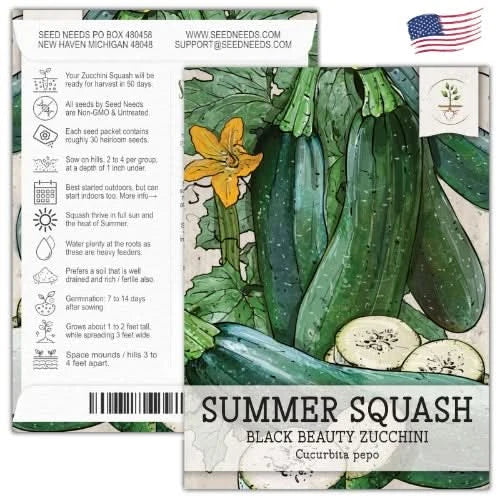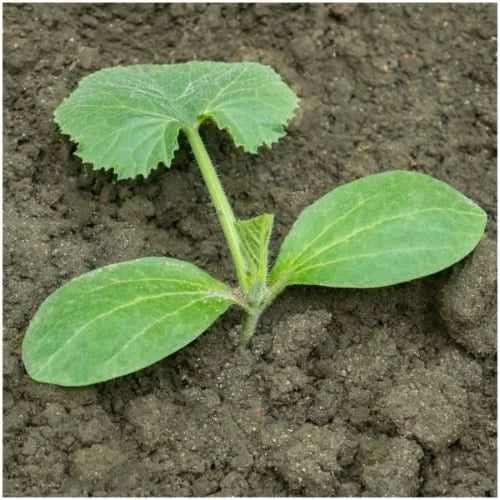Black Beauty, one of the most recognized zucchini varieties, was developed by the Connecticut Agricultural Experimental Station in the mid-20th century, specifically in 1957. This variety is noted for its long, straight shape with a very dark, almost blackish-green skin and slightly ridged texture. Its flesh is firm and greenish-white, typical of zucchinis prized for both culinary versatility and mild flavor. Being a bush type plant, Black Beauty doesn't require as much garden space as vining varieties, making it a favorite among home gardeners. Its history intertwines with the broader adoption of zucchini in the U.S. during the 20th century, transitioning from a relatively unknown "green Italian squash" to a staple in American gardens and kitchens.
What are the differences between summer squash and winter squash you might ask? Well, summer squash, like the Black Beauty zucchini, are harvested when immature, which means their skin is tender, and the seeds are soft, making them perfect for quick-cooking methods like sautéing or grilling. They are characterized by their mild flavor and high water content. Conversely, winter squash has a harder, often inedible rind, and its seeds are mature, which allows them to be stored for months, hence the name "winter" squash. Winter varieties, such as butternut or acorn squash, require a longer growing season and are typically roasted or baked, offering a richer, sweeter taste due to their higher starch content. While summer squash thrives on being eaten soon after harvest, winter squash's hard shell and dense flesh enable it to develop a deeper flavor profile over time, making it ideal for hearty dishes like soups or stuffing. Both types belong to the Cucurbitaceae family but differ significantly in cultivation practices, culinary uses, and storage longevity.



